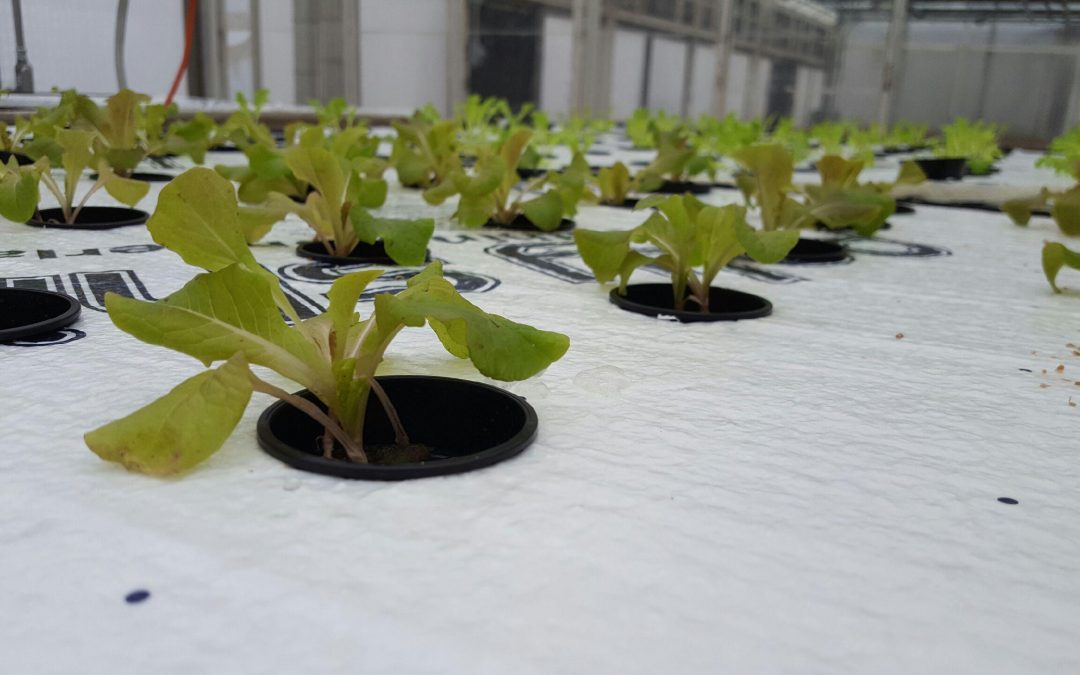By: Izaiah Bokunewicz
On Thursday, February 2nd, six pounds of lettuce were harvested from the Student Farm’s hydroponics, with the help of multiple volunteers. Together, we harvested a combined six pounds of green-leaf romaine, red-leaf romaine, and a green-leaf tango lettuce. Finally, on Friday morning after overnight storage in the veg cellar coolers, the lettuce was delivered on foot to Redifer Dining Commons.
To understand the accomplishment, in multiple regards, of Thursday’s harvest, I need to flashback five months to October, 2016. Last fall, as the one-acre Student Farm wrapped up a very successful summer season, multiple Student Farm Club members had questions about the possibility of hydroponic production over the winter. Some of these questions, for example were:
Where would we grow food? How would we grow food and what crops would we grow? What resources would be available to help manage production? Who would oversee production on a consistent basis?
With encouragement from Student Farm Club leadership and ongoing support from the Penn State greenhouse’s management, I volunteered to help construct and maintain our indoor production with senior, Nick Michalisin.
In November, the Student Farm received an offer to rent a greenhouse space located across from the Berkey Creamery. Soon after, the idea of a hydroponics project became the real deal.
Over the next two months, I learned many different things pertaining to the way that raft-system hydroponic functions. Building the systems came with multiple trips to Home Depot, many online orders and lots of tedious tasks, such as drilling and cutting styrofoam sheets, massing and measuring nutrient solutes and planting thousands of seeds. In mid December, after months of hard work, our system and seedlings were ready to go! With aerated water, and sufficient nutrients, we transplanted our first seedlings.
Within two days of being in the system, our seedlings looked near-dead. Our nutrient levels seemed adequate and our water was being aerated, but the lettuce looked terrible and extremely stressed. This abrupt problem inspired me to research more about raft-system hydroponics, trying to figure out what went wrong. Before long, I noticed something that set off multiple alarms: our system’s pH.
The water troughs that we had the opportunity to use for our systems were 80 gallon troughs. We then filled these troughs, with 80 gallons of water each that would sit and aerate. The problem was, the pH of hose-water in the PSU greenhouses is around 7.3. With 80 gallons of this water and the addition of our nutrients, the pH of our solution rose to approximately 8.3 over a few days. The optimum pH for leafy greens is 5.5-7.5. Any balance above 7.5 makes it very difficult for plant roots to absorb multiple essential nutrients.
With a problem solving mindset, we needed to use chemistry to resolve this issue. Ultimately, our water needed to be more acidic. Adding an acid into our water would add more H+ ions into the water, making the dissolved salts more soluble and easier for plants to take up. To resolve this, with the assistance of PSU greenhouse management, I requested that the Student Farm purchase sulfuric acid. In an extremely careful process, we purchased and diluted sulfuric acid to 35%. We then experimented in a more-or-less trial-and-error effort towards how much we needed to add to 80 gallons in order to settle our pH at about 6.
The process of learning the effects of “adding H2SO4” to lower the pH took about 1 month to master, because after adding sulfuric acid to our 80 gallons of water, it needed to sit for a few days so we could get an accurate reading on the pH change. In other words, it seemed as though the acid needed multiple days to equilibrate, or spread out evenly in our system.
Finally, by the end of January, our pH was on point, our nutrient levels were very good, and our seedlings were more than ready to be inserted into our hydroponics. We transplanted, and let the plants go. Then came last Thursday night, February 2nd.
As of this week, the first week of February, two-thirds of our hydroponics systems are fully functioning and growing lettuce. The rest of our troughs will be filled successively in the coming weeks as we harvest and plant more lettuce. We expect to harvest at least ten pounds of lettuce each week, with two harvests per week. As we learn about how to harvest and how to manage our systems, our production capabilities should increase even more.
The future of the Student Farm’s hydroponics looks bright! Bright red and violet because of the LED grow lights in our greenhouse space and bright green with our fresh, leafy lettuce underneath.



